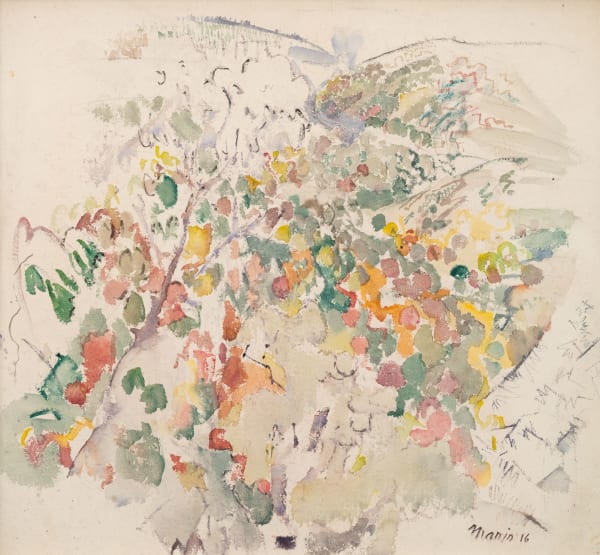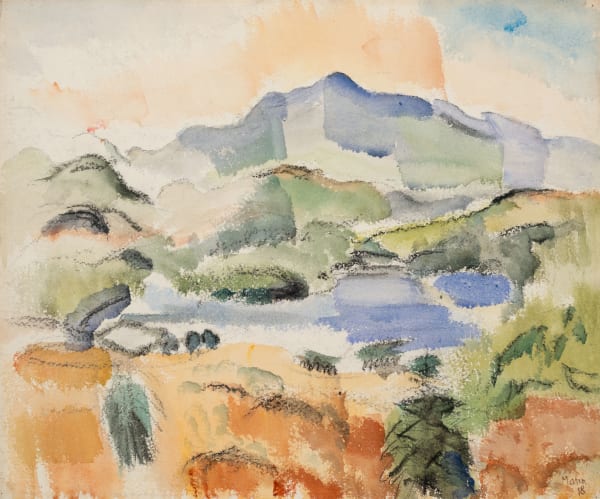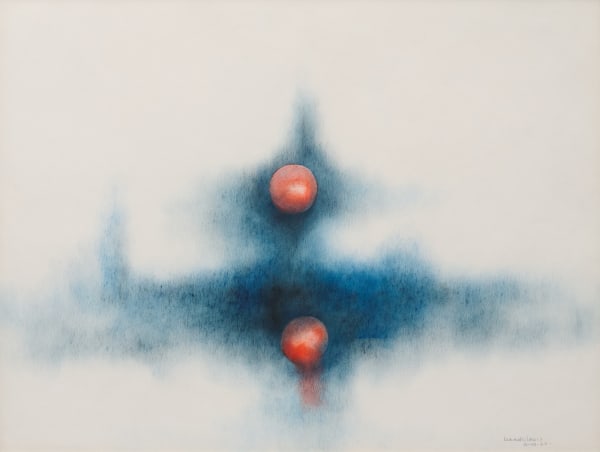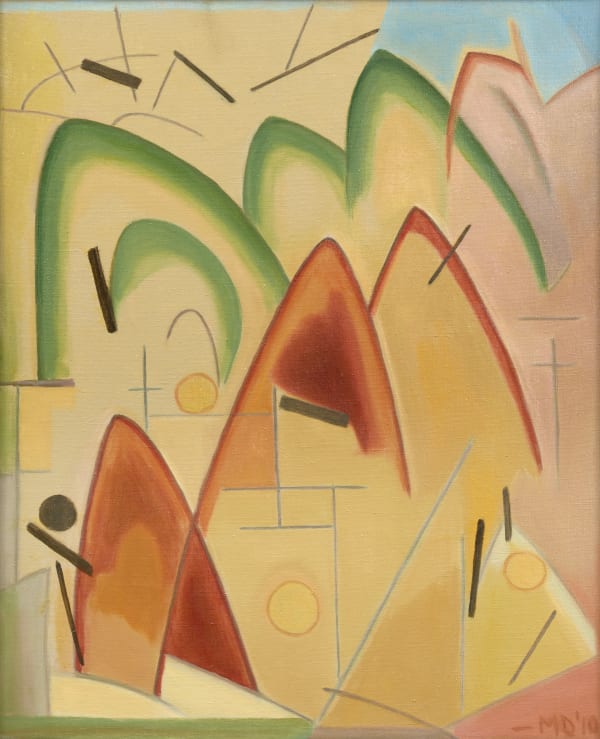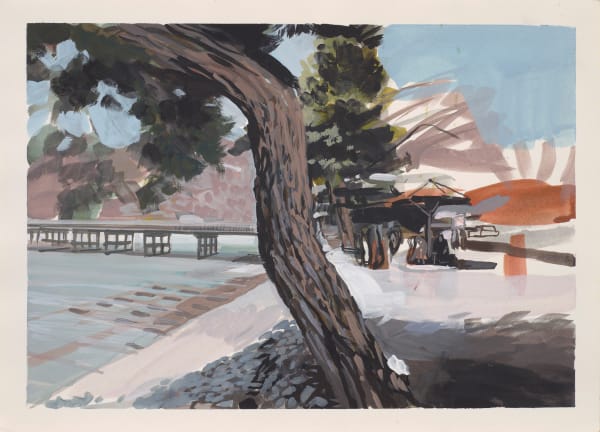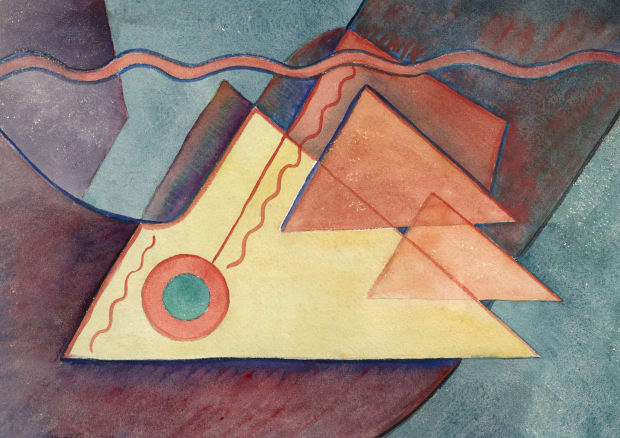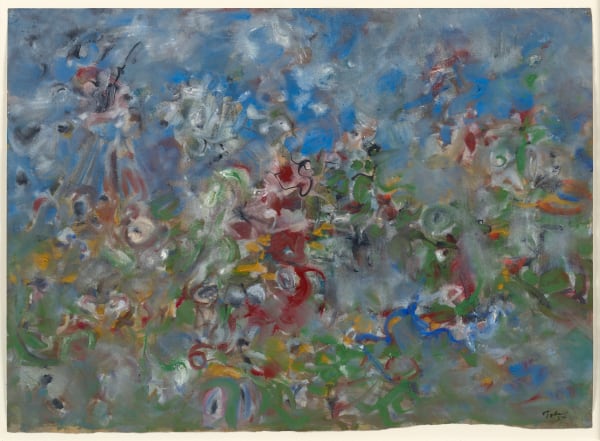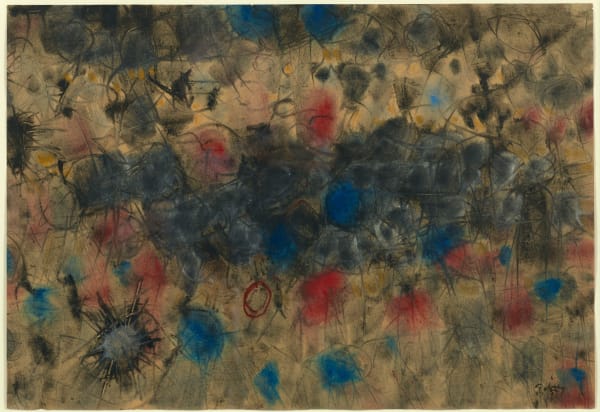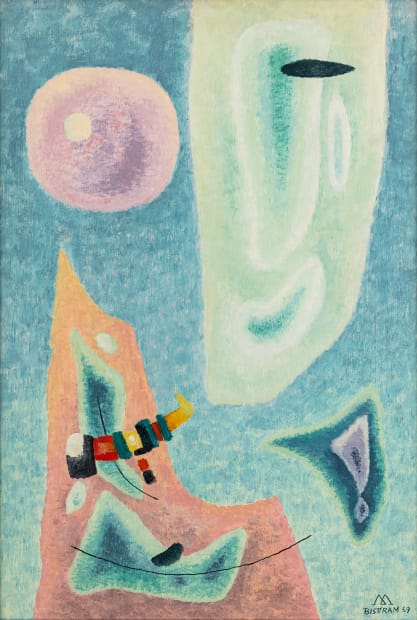-

Felrath Hines
Bouquet, 1957Bouquet’s bright use of color and layered brushwork anticipates the ambitious series of large-scale abstractions Felrath Hines produced in the 1960s. Hines possessed a masterful understanding of the complexities of oil painting, gleaned through his successful career as a conservator. A founding member of the Spiral Group, a Black artists’ collective that sought to center marginalized artists, Hines remained committed to his personal language of abstraction, which served as a radical departure from the forms of visual art expected from Black artists at the time—typically realistic paintings of African heritage and history.
-

-
Highlights from 'Masterworks of American Art from the Estate of Dr. Walter Goldfarb'
Presented at Schoelkopf Gallery January 17 - February 24, 2023 -
Charles Demuth (1883 - 1935)
-
Highlights from 'John Marin Watercolors: 1916 - 1919'
Presented at Schoelkopf Gallery March 10 - April 21, 2023 -
-

Georgia O'Keeffe
A Sunflower from Maggie, 1937Painted in New Mexico in 1937, A Sunflower from Maggie testifies to Georgia O’Keeffe’s career-long investigation into the material and conceptual possibilities that arise between representation and abstraction through the lens of the still life genre. In this resplendent example, O’Keeffe varied her application of paint to reflect the texture of a sunflower. Thick, vibrant yellow brushstrokes radiate outward, each corresponding to a flower petal, while delicate dots of paint indicate seeds that progressively evaporate toward the center. These subtle technical devices enhance the portrayal of the sunflower and, upon closer look, emerge as abstract subjects within themselves in a modernist tour de force. -
“Art is a language in itself, embodying purely visual symbols which cannot properly be translated into words, musical notes, or in the case of painting, three dimensional objects, and to attempt such is to be unable to admit the unique function of art or understand its language.” - Norman Lewis, c. 1950
-
Norman Lewis (1909 - 1979)
-

-
Manierre Dawson (1887-1969)
-

-
Richard Estes (b. 1932)
Richard Estes has the unparalleled ability to manipulate compositions captured by his camera and to play with perspective in order to arrive at a painting faithful to his vision of the city. Estes arranges his high-information painting with satisfying clarity, arriving at a composition that is both specific to a moment in time and a timeless urban landscape.
-

-
Mark Tobey (1890 - 1976)
-

-

-
For more information regarding Now Modern, or to be added to our mailing list, please contact Alana Ricca at
(212) 879-8815, or alana@schoelkopfgallery.com. We look forward to being in touch.
The Spring 2023 edition of Now Modern presents a selection of works by Charles Demuth, Richard Estes, Marsden Hartley, Fitz Henry Lane, Norman Lewis, John Marin, Georgia O'Keeffe, John Frederick Peto, and Mark Tobey, among others. These leading artists worked across genres and styles to advance a variety of important movements that contributed to the evolving canon of American art, including Luminism, Realism, Abstract Expressionism, and Photorealism.






